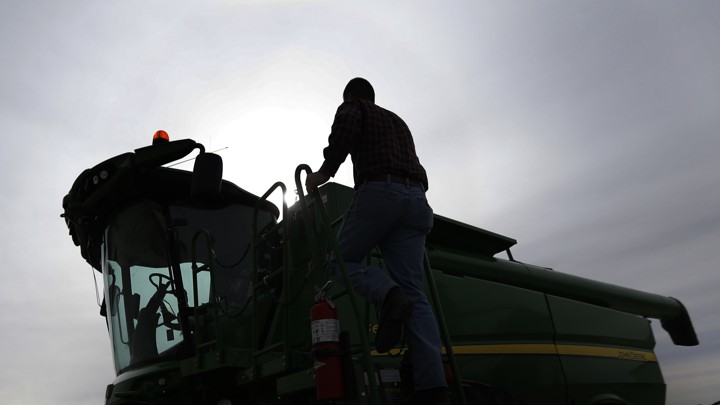The Unexpected Side Effects of Trump’s Trade War
 Several weeks ago, John Boyd’s combine broke down. The machine is an absolute necessity for Boyd—he, like most commodity farmers, uses it to harvest the soybeans, corn, and wheat he grows every year in Baskerville, Virginia. What he really needs is a whole new combine, which would allow him to harvest his crops more efficiently, and which would last him much longer than fixing his current machine or buying a used one. But a new combine would cost him more than $480,000. With his farm income down and equipment prices up, “I haven’t been able to buy anything at all,” Boyd says.
Several weeks ago, John Boyd’s combine broke down. The machine is an absolute necessity for Boyd—he, like most commodity farmers, uses it to harvest the soybeans, corn, and wheat he grows every year in Baskerville, Virginia. What he really needs is a whole new combine, which would allow him to harvest his crops more efficiently, and which would last him much longer than fixing his current machine or buying a used one. But a new combine would cost him more than $480,000. With his farm income down and equipment prices up, “I haven’t been able to buy anything at all,” Boyd says.
Like farmers around the country, Boyd is in the crosshairs of the trade war, caught between the 25 percent tariffs that the United States has imposed on imported raw materials such as steel and aluminum and the retaliatory tariffs that China and other countries have imposed on major American agricultural exports, especially soybeans. Though the United States and China have been trying to negotiate a new trade deal, a resolution isn’t likely to come until at least April.
No comments:
Post a Comment